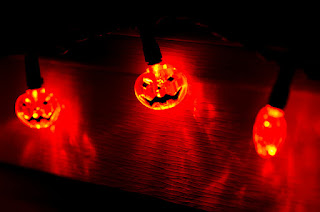Urban Legends and Halloween
- When John Steinbeck’s novel, The Grapes of Wrath was translated into Japanese, the title was mistranslated as The Angry Raisins.
- A woman who works with the American Bar Association called Mrs. Fields Cookies and asked for the chocolate chip cookie recipe. She was told there was a two-fifty charge for the recipe. She assumed it was $2.50 and charged it to her VISA. When she got her bill, she discovered it was not $2.50 but $250.00. In order to get her money’s worth, she passed the recipe out to everyone, telling them to “take a copy and give it to a friend with her blessing.”
- It was found that consuming Pop Rocks and drinking a carbonated beverage at the same time can cause your stomach to explode. Remember “Little Mikey” from Quaker Oat’s LIFE cereal commercials? He died from eating Pop Rocks and drinking a Coke.
These are examples of urban legends, or urban myths, and they are not true. The Cambridge Dictionary defines urban legend as a “story or statement that is not true but is often repeated, and believed by many to be true.” Unlike fairy tales, urban legends are intended to be taken as true stories about real events happening to real people. Often they happen to “a friend of a friend” of the teller, making it seem more credible. Author Jan Harold Brunvand is considered the authority on urban legends, having written several books on the subject and compiled the two volume Encyclopedia of Urban Legends.
The Mrs. Fields Cookie story, according to Brunvand’s Encyclopedia, is a variant of the American expensive-recipe story dating back to at least the 1940s. One prototype of this was The Red Velvet Cake story from the 1960s. A diner in the Waldorf-Astoria dining room asks for the secret recipe for the hotel’s delicious red velvet cake. After being billed an exorbitant amount of money for it, she discovers the secret is merely adding a large amount of red food coloring to a white cake recipe. In revenge she circulates the recipe for free. Up until the late 1970s, the Waldorf denied the veracity of the story and that they had ever served a bright red cake. However, the legend had become so strong that the hotel eventually decided to send out a free copy of the supposedly “authentic” recipe to anyone who asked about it.
In the 1980s, a chain letter began circulating in the mail claiming to contain the recipe for Mrs. Fields’ chocolate chip cookies. It was supposedly sent by a woman who had unintentionally paid $250 for it, and wanted to get back at the company by distributing it to as many people as possible. In response to this, Mrs. Fields issued a statement in 1987 that the story was not true. Her company did not sell its recipes and the one in the letter was not authentic.
Pop Rocks were introduced to the public in 1975 and became a hit with kids who loved the popping and sizzling sound the candy made. According to the fact-checking website Snopes.com, it was kids who started the rumor that mixing them with soda would cause the stomach to explode, along with a related rumor that Little Mikey in the LIFE cereal commercial had died after ingesting Pop Rocks and a Coke. Both of these rumors are false. No one has ever died from this combination (but I would be surprised if no one ever got a really bad tummy ache!) As for Little Mikey, he is still alive. John Gilchrist, the actor who played Mikey in one of the longest continuously running commercials ever aired (1972-1984), was interviewed in 2012 by Newsday. In the interview, he relates the afternoon in the late seventies when he first heard the Pop Rocks story. He was playing baseball when his mother called him inside to tell him that she had just received a phone call from a friend who tearfully told her “I’m so sorry to hear about your son!” By the way, Mikey’s two brothers in the commercial are Gilchrist’s actual brothers.
Halloween is a time when urban legends, especially those of the frightening and morbid variety, are especially popular. The ones most publicized over the past forty years and most believed are the stories about poisoned or drug-laced Halloween candy and razor blades or other sharp objects hidden in apples and candy bars. How Stuff Works gives some common sense recommendations –
“Although the odds of someone actually tampering with Halloween candy are slim-to-none, most experts recommend that parents check their kids' Halloween haul before letting them eat it. Although you don't need to have your candy x-rayed at the local hospital or airport (and many of them offer the service), you should throw out any candy that's unwrapped, homemade (unless you know the person who made it) or has a torn wrapper, just to be on the safe side.”
The Mercer County Library has a large selection of books, DVDs and eBooks about urban legends – just search “urban legends” in our catalog.
For Garden State-specific urban legends, take a look at Weird N.J. – in magazine, book form, or on the web.
And, if you are looking for more about Halloween, check out:
Extreme Pumpkins by Tom Nardone
Extreme Halloween by Tom Nardone
Halloween by Matthew Mead
The Halloween Encyclopedia by Lisa Morton
Halloween: From Pagan Ritual to Party Night by Nicholas Rogers
Happy Halloween!
- Elka R. Frankel, West Windsor Branch

Comments
Post a Comment